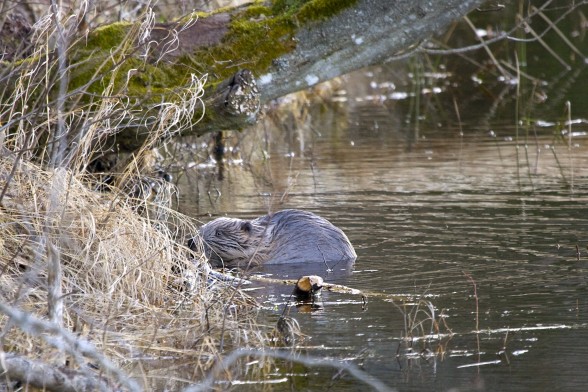
Eurasian beaver
Diet
A typical herbivore. The beaver's menu includes almost all local herbs (except poisonous ones), i.e., crops, and about 20 species of woody plants. During the warm period of the year, the beaver eats mainly the succulent parts of all herbaceous plants that grow in the water and on the shore. If the animal has a choice, most of its summer menu includes sweet flags, young reeds, pond lilies or water lilies, cattail, snake grass, reeds, bog arum, bogbeans, marsh marygolds, dropworts, purple marshlocks and nettles. In autumn, winter, early spring, the beaver eats roots of various aquatic plants and fine twigs of shrubs and trees, tree bark, preferring soft deciduous trees (aspens, willows, white alders, birches).
Habitat
The beaver occurs frequently, but mostly in watery areas. The animals can be found in a number of freshwater habitats, such as rivers, streams, lakes and ponds. The largest number live in forest habitats, first of all choosing the banks of rivers, streams and ditches, preferring lakes, ponds and old rivers, the shores of which are overgrown with deciduous trees, shrubs and herbaceous plants. Beavers build dams using tree branches, trunks, stones and mud to create a shelter-proof home. The main enemies of beavers are wolves and bears.
Important and interesting facts
The weight of an adult beaver can reach 27 kg. It is the largest rodent in Europe and is the second-largest living rodent, after capybara. Beavers are able to spend 15-20 minutes underwater. The hind feet have webbing between the toes – it helps the beaver move in the water. The tail acts as a rudder when the animal is swimming. Beavers’ four chisel-shaped incisors grow continuously.
Information sources: latvijasdaba.lv, Wikipedia
Photos: Māris Kreicbergs, redzet.eu
